的点评
India’s most haunted place?
Bhangarh Fort的点评
点评:The late 16th century hill fort of Bhangarh was constructed under the aegis of Raja Bhagwant Singh of Amber, father to Man Singh (who was one of Akbar’s ‘nauratna’ or ‘nine gems’). After the death of Bhagwant Singh, the fort passed into the possession of his son Madho Singh (who also went on to serve as a courtier at Akbar’s court). The fort once sprawled over a large area, approached through three rows of fortifications, with successive gates leading deeper and deeper into the fort.
Tickets (Rs 20 per adult Indian; children go free) have to be bought at the ticket counter, after which you walk between rows of ruined colonnades, possibly once the marketplaces of the fort. Further on, the space opens out, with the main palace (originally a seven-storeyed structure) rising high up at the far end, with the hillside behind it and ramparts climbing the hill to watchtowers situated atop. At the levels below the palace are several temples, including a couple of carved stone ones: we visited the Gopinath Temple, the one closest to the gate.
Bhangarh’s claim to fame is that it’s believed to be India’s most haunted place: people say that after nightfall, the fort gets all spooky, with the sounds of weird music, crying children, jangling bangles, and more. There are two local stories, too, tied to curses, that attempt to explain the background of these hauntings. One has it that Bhagwant Singh was cursed by a local sage on whose hut the shadow of the fort fell, much to his displeasure; another story revolves around a beautiful princess who was cursed by a sorcerer whose professions of love she had spurned.
We arrived here at about 4 PM, just an hour before the fort closes. It was very busy, with lots of tourists all over the place. The palace is in pretty bad condition, with crumbling walls everywhere, though the gates and the ramps leading up have obviously been newly done. The signage is very bad: except for a general bit of information about the fort as a whole, there’s nothing else. Guides are available, but we decided not to hire one. The palace is the main attraction; the other structures (like the two largest temples in the fort, Someshwar and Gopinath) seem to be mostly forgotten.
This was interesting as a historical monument; it didn’t seem spooky to me at all.
Tickets (Rs 20 per adult Indian; children go free) have to be bought at the ticket counter, after which you walk between rows of ruined colonnades, possibly once the marketplaces of the fort. Further on, the space opens out, with the main palace (originally a seven-storeyed structure) rising high up at the far end, with the hillside behind it and ramparts climbing the hill to watchtowers situated atop. At the levels below the palace are several temples, including a couple of carved stone ones: we visited the Gopinath Temple, the one closest to the gate.
Bhangarh’s claim to fame is that it’s believed to be India’s most haunted place: people say that after nightfall, the fort gets all spooky, with the sounds of weird music, crying children, jangling bangles, and more. There are two local stories, too, tied to curses, that attempt to explain the background of these hauntings. One has it that Bhagwant Singh was cursed by a local sage on whose hut the shadow of the fort fell, much to his displeasure; another story revolves around a beautiful princess who was cursed by a sorcerer whose professions of love she had spurned.
We arrived here at about 4 PM, just an hour before the fort closes. It was very busy, with lots of tourists all over the place. The palace is in pretty bad condition, with crumbling walls everywhere, though the gates and the ramps leading up have obviously been newly done. The signage is very bad: except for a general bit of information about the fort as a whole, there’s nothing else. Guides are available, but we decided not to hire one. The palace is the main attraction; the other structures (like the two largest temples in the fort, Someshwar and Gopinath) seem to be mostly forgotten.
This was interesting as a historical monument; it didn’t seem spooky to me at all.
翻译:16 世纪末的 Bhangarh 山堡是在 Amber 的 Raja Bhagwant Singh 的赞助下建造的,他是 Man Singh(阿克巴的“nauratna”或“九颗宝石”之一)的父亲。Bhagwant Singh 去世后,这座堡垒传给了他的儿子 Madho Singh(他也曾在阿克巴的宫廷中担任朝臣)。这座堡垒曾经占地广阔,需要通过三排防御工事才能到达,连续的大门通向堡垒的深处。
门票(每位印度成人 20 卢比;儿童免费)必须在售票处购买,然后您将穿过一排排残破的柱廊,这些柱廊可能曾经是堡垒的市场。再往前走,空间变得开阔,主宫殿(最初是一座七层建筑)高高耸立在远端,后面是山坡,城墙沿着山坡向上延伸到山顶的瞭望塔。宫殿下方有几座寺庙,包括几座石雕寺庙:我们参观了离大门最近的戈皮纳斯寺庙。
班加尔古堡之所以出名,是因为它被认为是印度闹鬼最严重的地方:人们说,夜幕降临后,这座堡垒变得非常阴森,到处都是奇怪的音乐声、孩子的哭声、叮当作响的手镯声等等。还有两个与诅咒有关的故事,试图解释这些闹鬼的背景。其中一个故事是,巴格万特·辛格被一位当地圣人诅咒,堡垒的阴影落在了他的茅屋上,这让他非常不高兴;另一个故事围绕着一位美丽的公主展开,她被一位巫师诅咒,而这位巫师曾向她表达过爱意。
我们大约在下午 4 点到达这里,就在堡垒关闭前一个小时。这里非常繁忙,到处都是游客。宫殿的状况相当糟糕,到处都是摇摇欲坠的墙壁,不过大门和通往宫殿的斜坡显然是新修的。标识非常糟糕:除了关于整个堡垒的一些一般信息外,没有其他信息。这里有导游,但我们决定不雇一个。宫殿是主要景点;其他建筑(如堡垒中最大的两座寺庙 Someshwar 和 Gopinath)似乎大多被遗忘了。
作为一座历史古迹,这很有趣;在我看来,它一点也不吓人。
门票(每位印度成人 20 卢比;儿童免费)必须在售票处购买,然后您将穿过一排排残破的柱廊,这些柱廊可能曾经是堡垒的市场。再往前走,空间变得开阔,主宫殿(最初是一座七层建筑)高高耸立在远端,后面是山坡,城墙沿着山坡向上延伸到山顶的瞭望塔。宫殿下方有几座寺庙,包括几座石雕寺庙:我们参观了离大门最近的戈皮纳斯寺庙。
班加尔古堡之所以出名,是因为它被认为是印度闹鬼最严重的地方:人们说,夜幕降临后,这座堡垒变得非常阴森,到处都是奇怪的音乐声、孩子的哭声、叮当作响的手镯声等等。还有两个与诅咒有关的故事,试图解释这些闹鬼的背景。其中一个故事是,巴格万特·辛格被一位当地圣人诅咒,堡垒的阴影落在了他的茅屋上,这让他非常不高兴;另一个故事围绕着一位美丽的公主展开,她被一位巫师诅咒,而这位巫师曾向她表达过爱意。
我们大约在下午 4 点到达这里,就在堡垒关闭前一个小时。这里非常繁忙,到处都是游客。宫殿的状况相当糟糕,到处都是摇摇欲坠的墙壁,不过大门和通往宫殿的斜坡显然是新修的。标识非常糟糕:除了关于整个堡垒的一些一般信息外,没有其他信息。这里有导游,但我们决定不雇一个。宫殿是主要景点;其他建筑(如堡垒中最大的两座寺庙 Someshwar 和 Gopinath)似乎大多被遗忘了。
作为一座历史古迹,这很有趣;在我看来,它一点也不吓人。
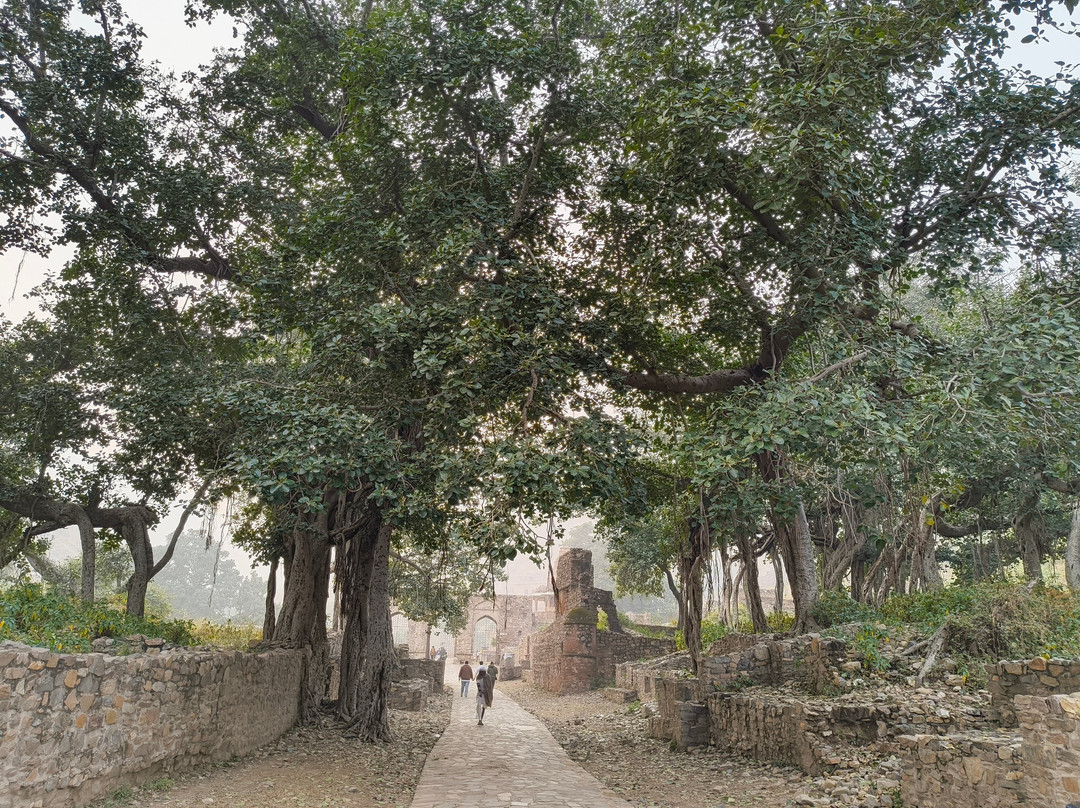
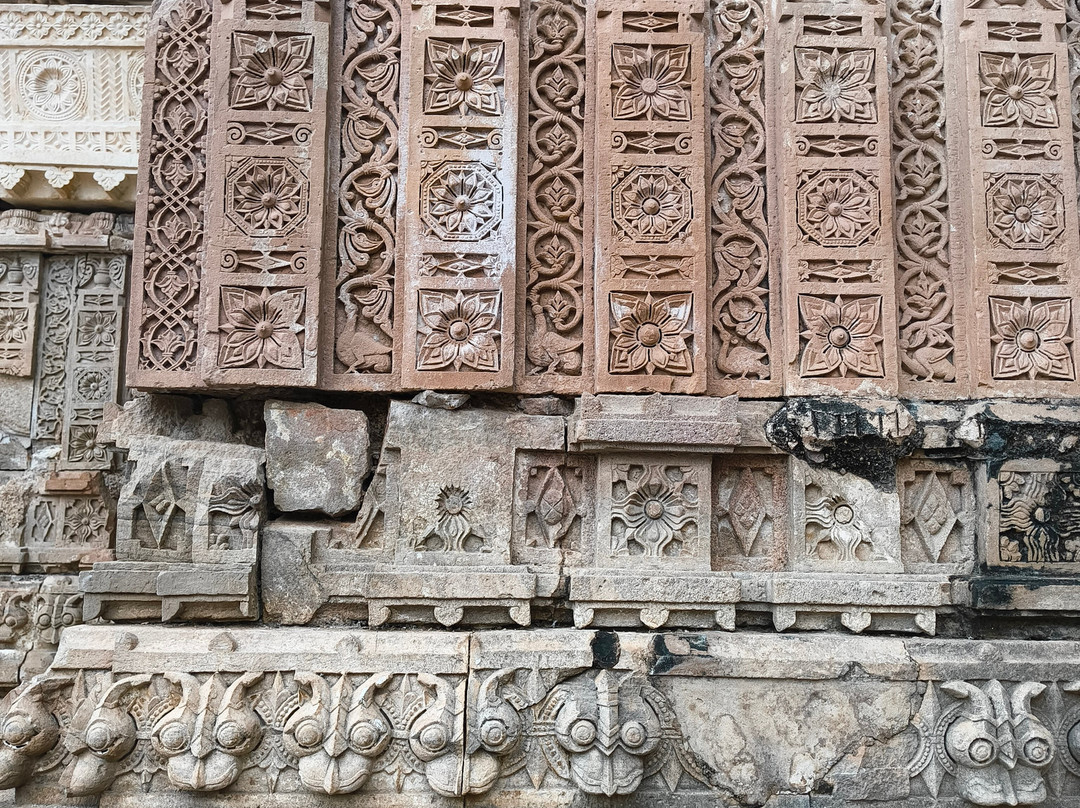
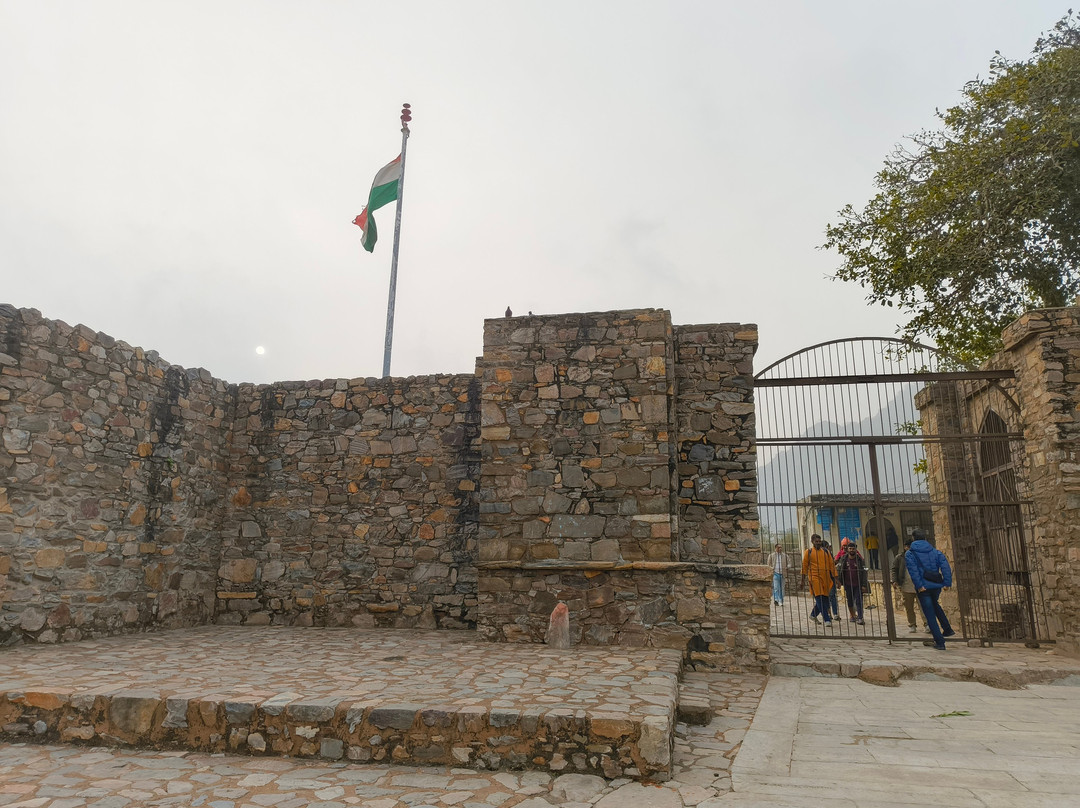
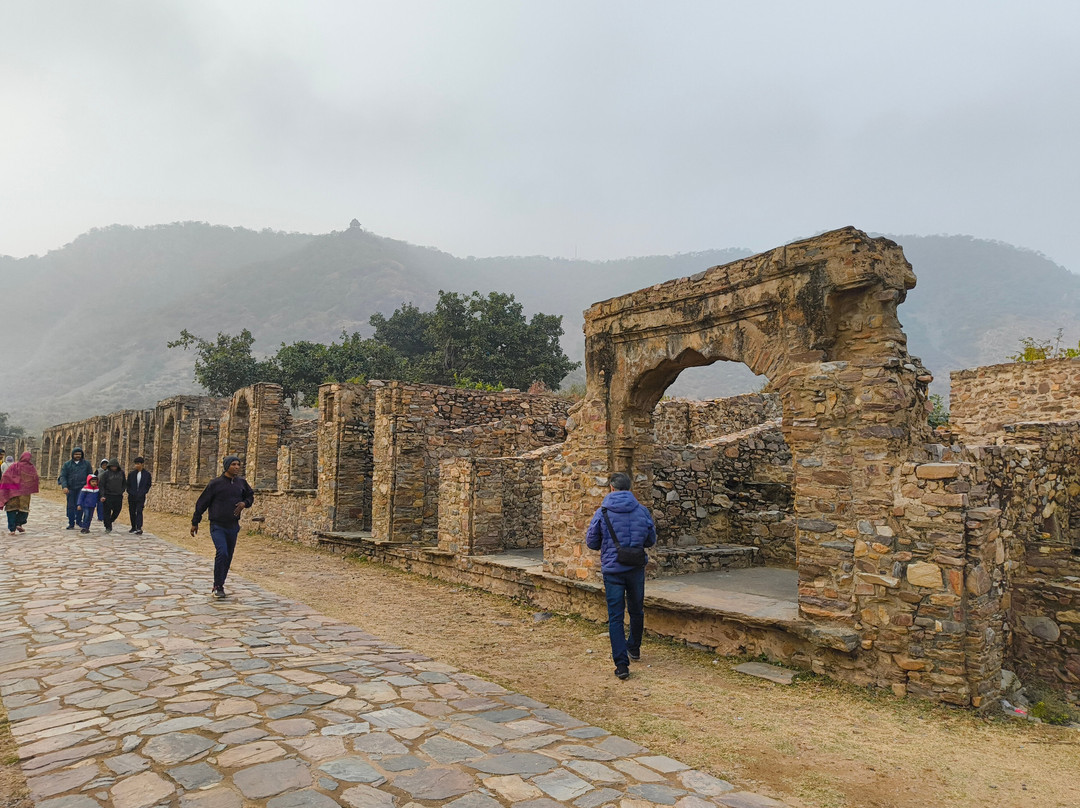
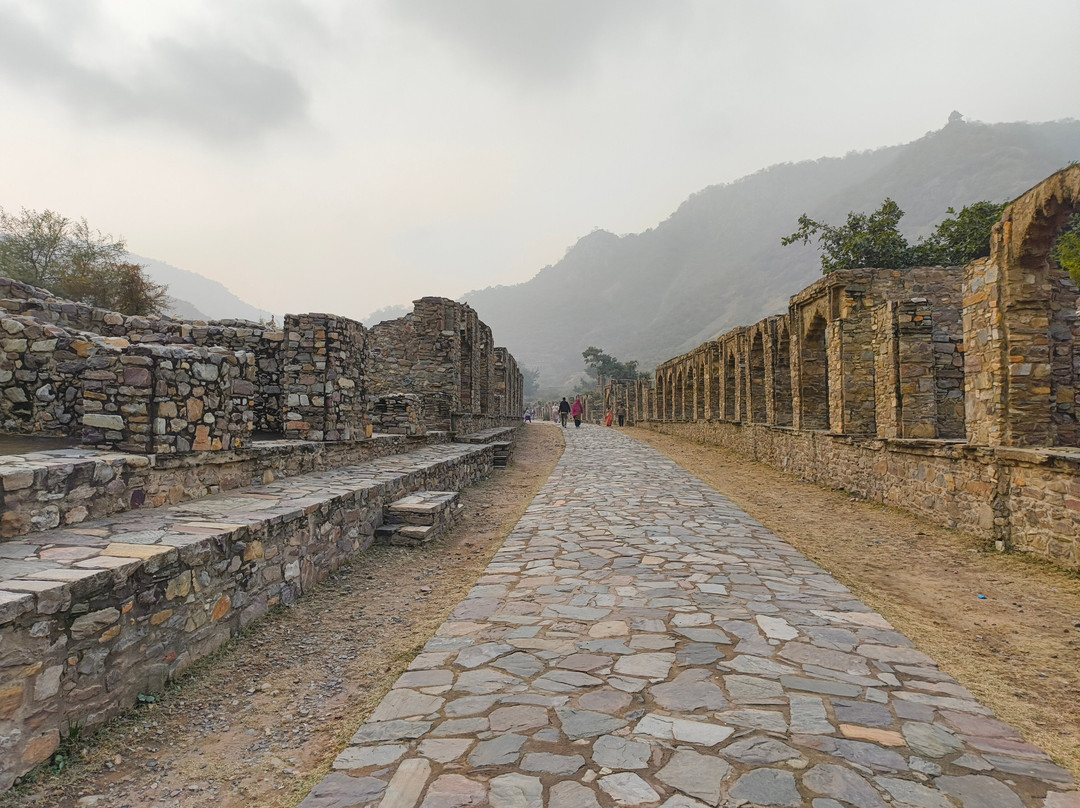
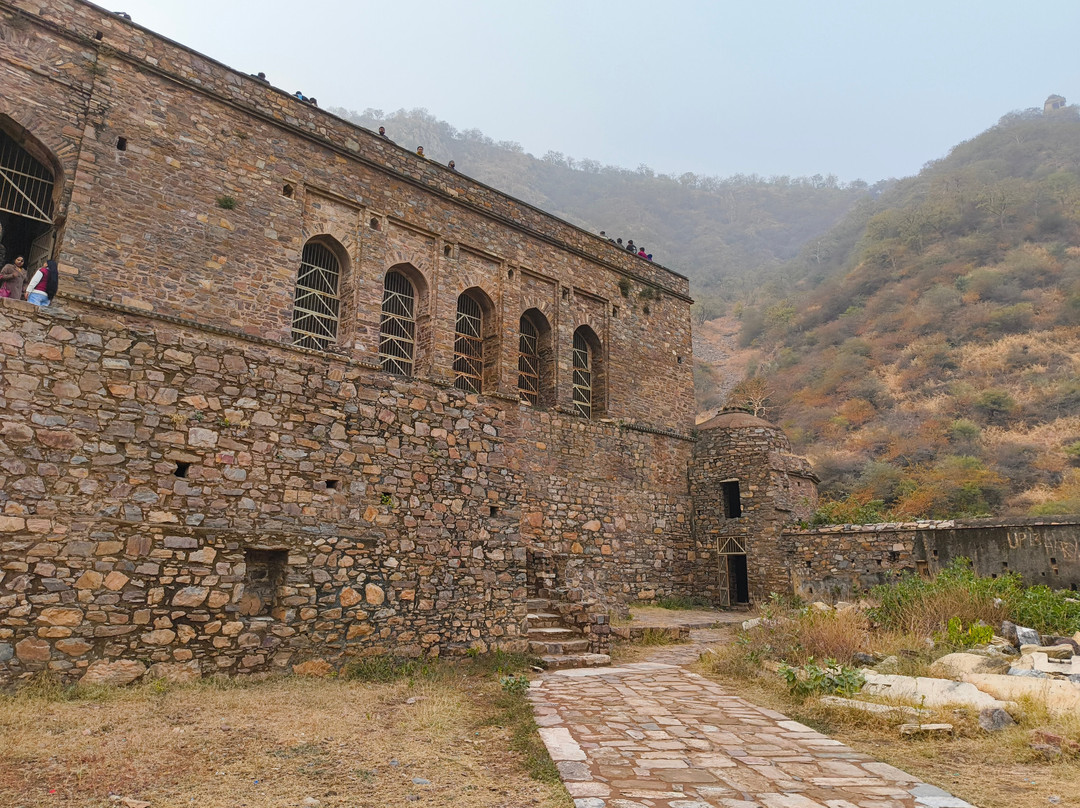
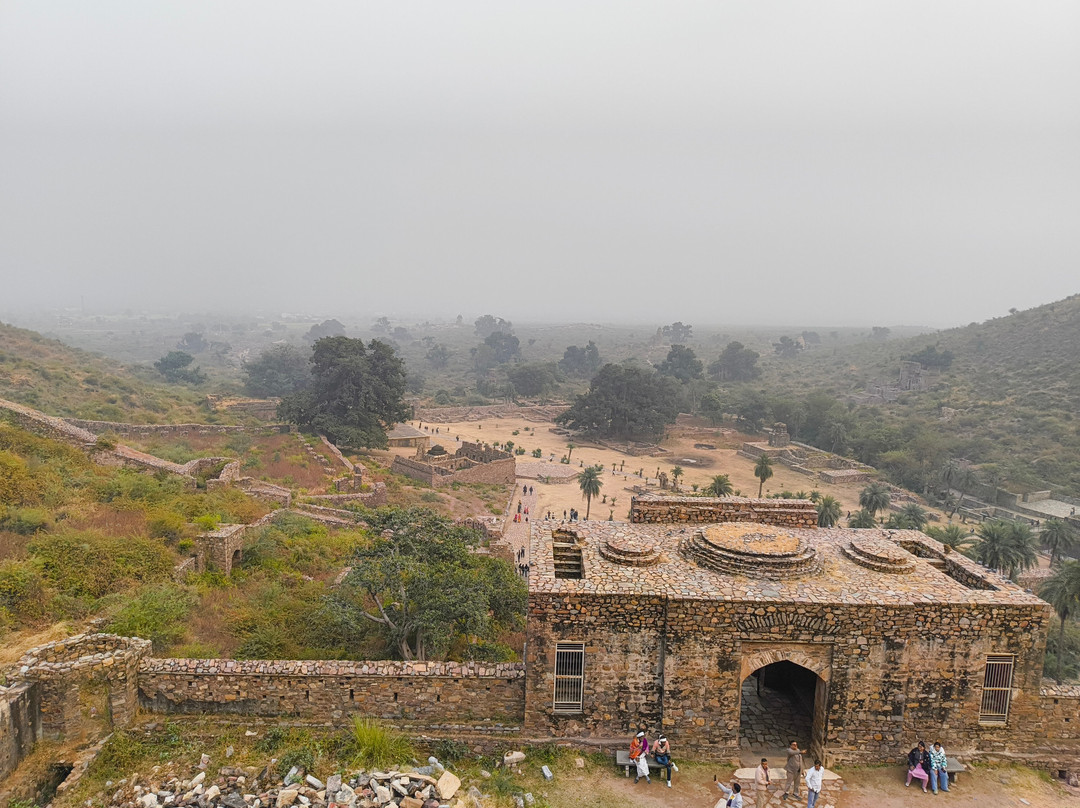
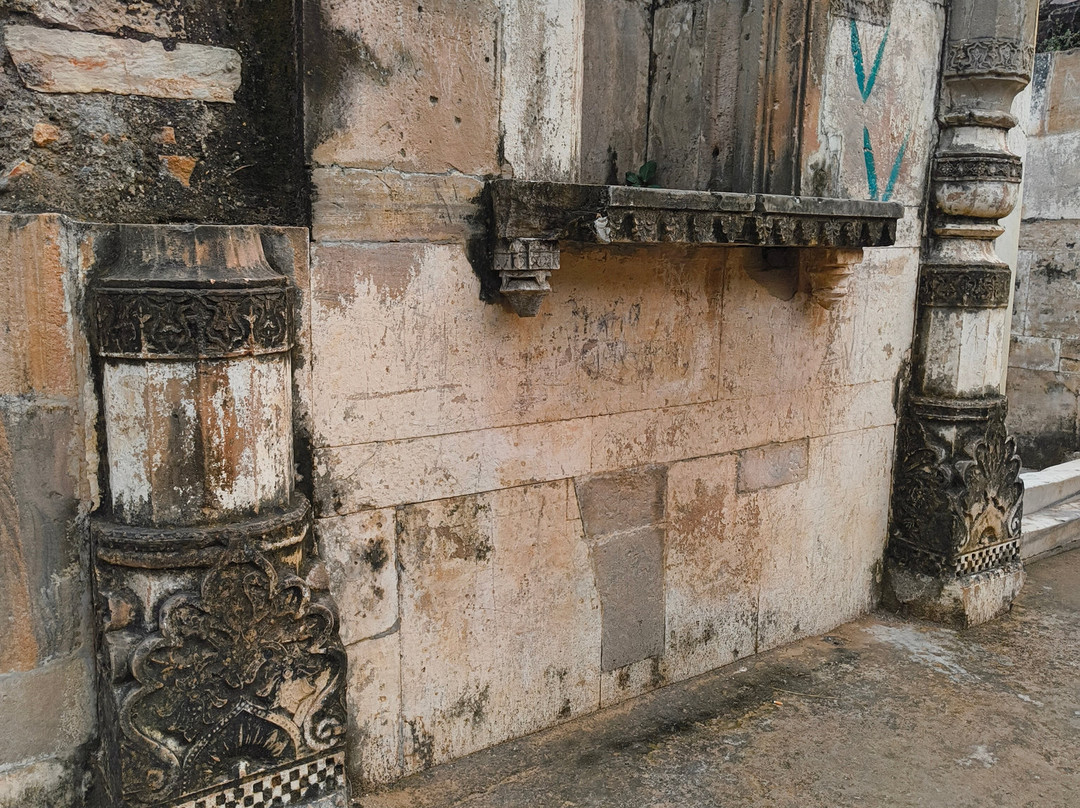
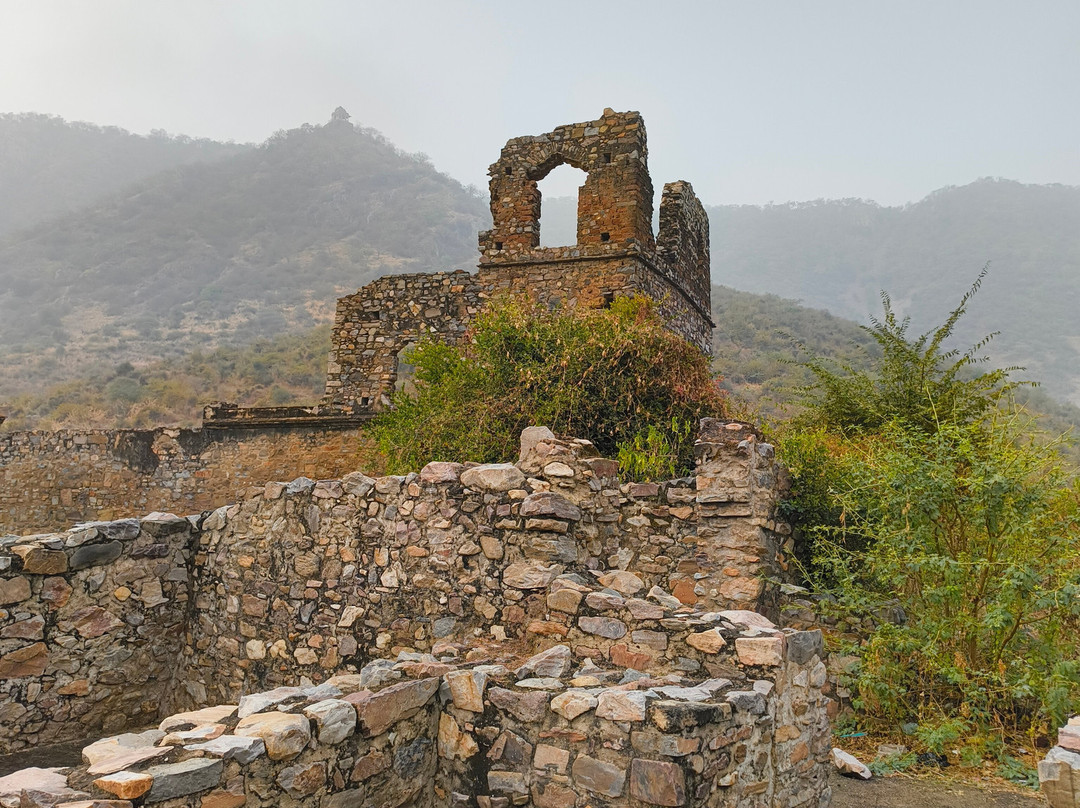
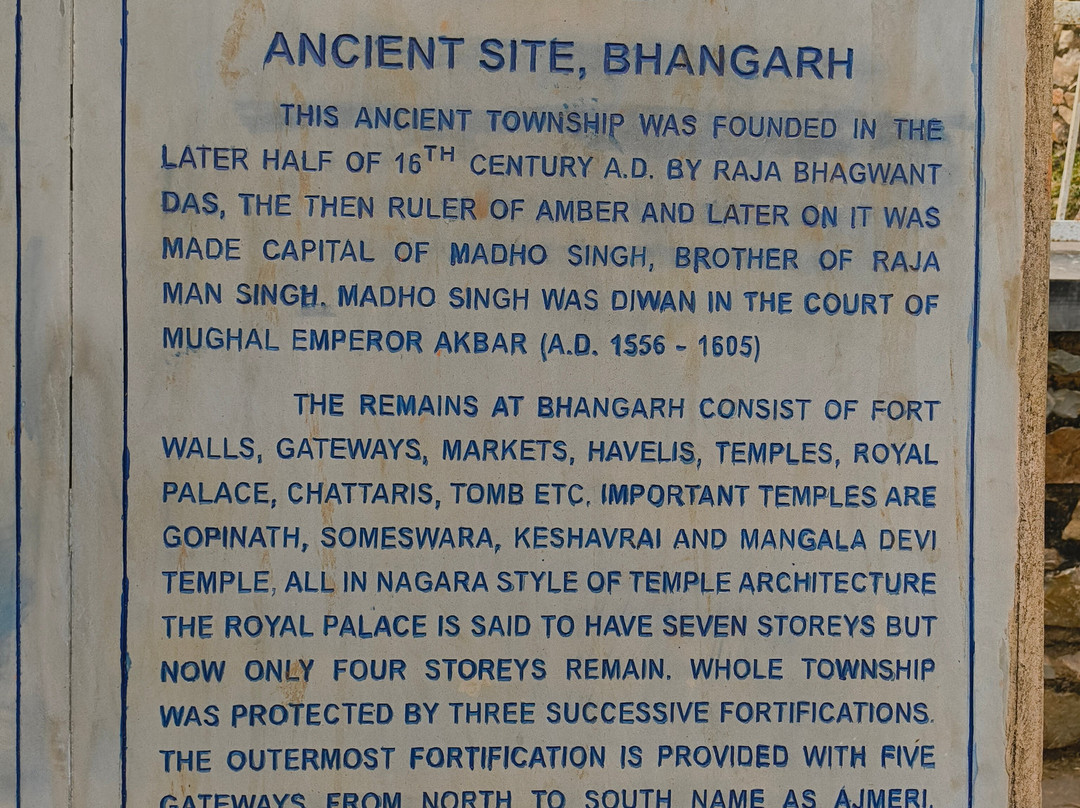

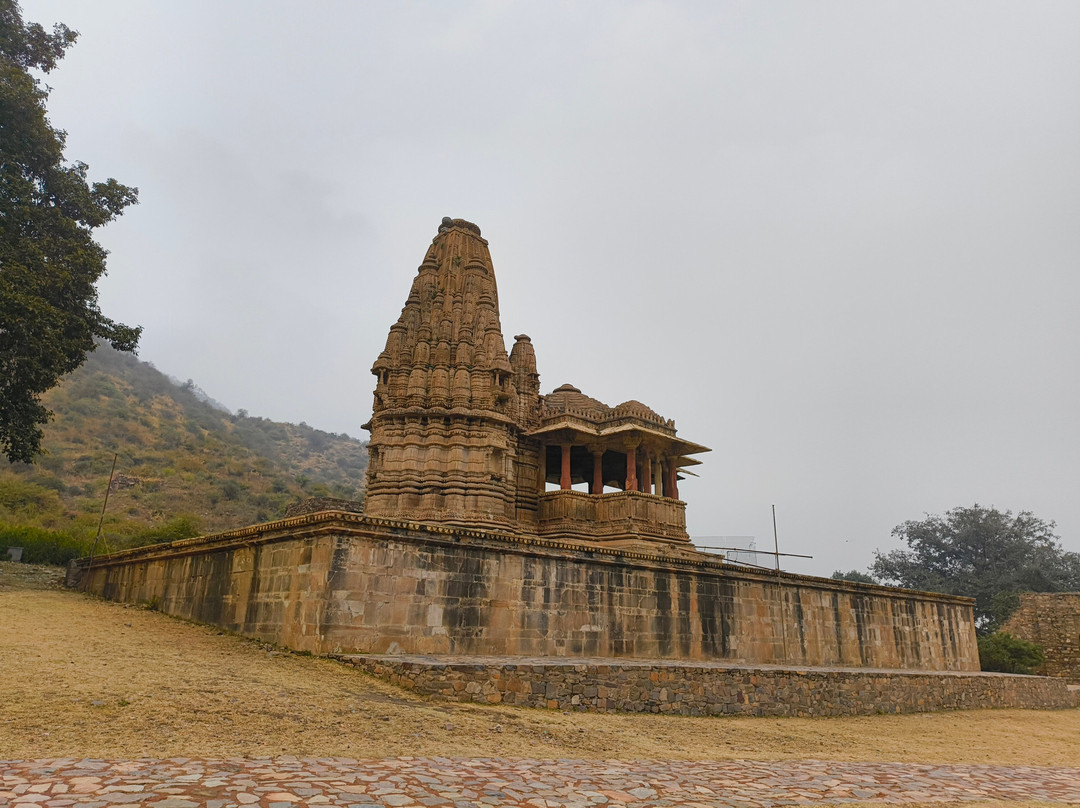
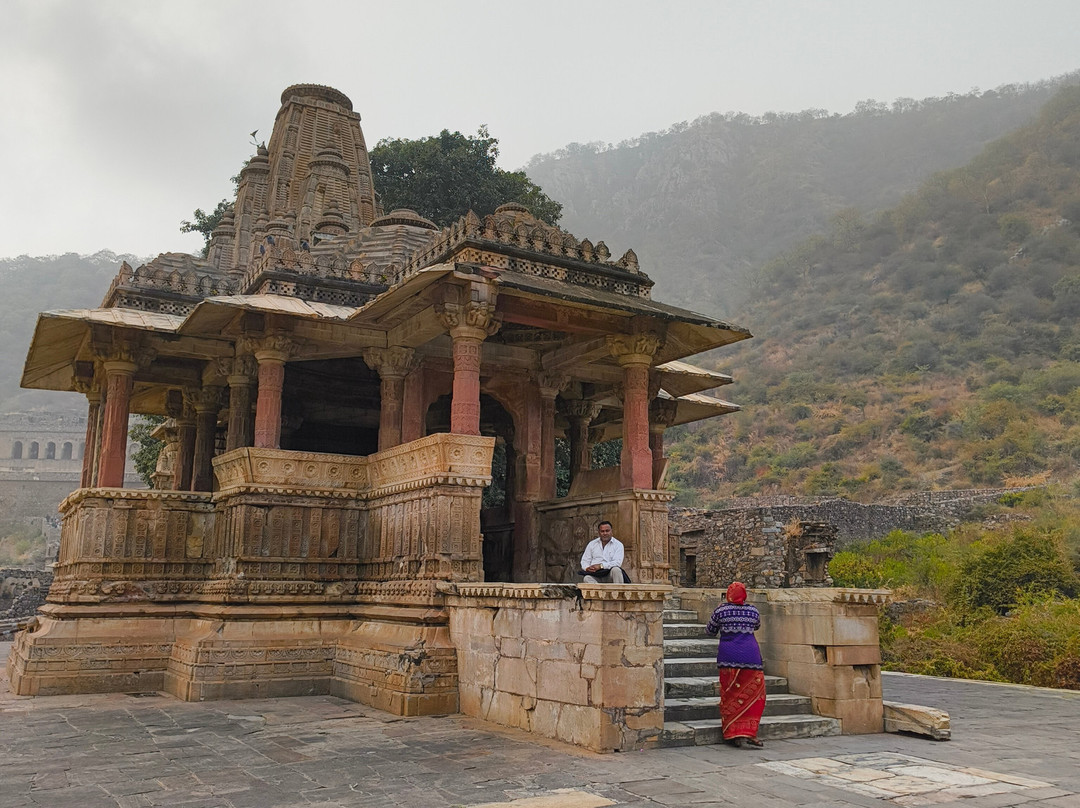

此点评仅代表旅行者个人的主观意见,并不代表TripAdvisor以及其合作方的意见。
关于我们
|
新闻动态
|
商务合作
|
会员中心
|
业主中心
|
业主通
|
常见问题
|
意见反馈
|
联系我们
|
营业执照
© 2025 Tripadvisor 版权所有。
使用条款 |隐私政策 |网站工作原理
部分照片由 VFM Leonardo 提供。
* Tripadvisor不是旅行社,也不是旅游预订服务代理商。我们提供免费、客观、公正的旅游资讯服务。 (显示更多)
TripAdvisor LLC 既不是预订代理商,也不是旅游运营商,不会向网站用户收取任何服务费。 按照规定,在 Tripadvisor 发布机票价格、游览和旅行套餐的合作伙伴(航空公司、旅行提供商及预订代理商),其标价须包含所有费用和附加费用。 例如, 机场出入境税费、消费税与其他服务费、手续费、杂费及附加费用。 当您向我们的某个合作伙伴进行预订时,请务必查阅他们的网站以了解当地行政部门要求的所有适用费用的具体情况。 除非另有说明,机票价格通常指的是一个人的价格(以人民币计)。
为方便起见,TripAdvisor LLC 根据从我们的预订合作伙伴获取的空房率计算每个酒店的均价。 对于游览和景点来说,所显示价格通常是每位成人的最低可用价格。 对于列出的任何旅行套餐或优惠,TripAdvisor LLC 无法保证任何特定的费率或价格。 此外,酒店均价每晚会更新,并以您的首选币种表示(使用现行汇率)。 由于这些已换算的价格是预估价格,因此,有关具体金额和币种请与预订网站进行核实。
此外,TripAdvisor LLC 无法保证我们网站上宣传的价格随时有效。 标价可能需要预订一定天数才能生效,或有不可用日期、使用条件或限制。
TripAdvisor公司对外部网站的内容一概不负责。优惠价格中不含税和其他费用。
ICP证:沪B2-20200433
沪ICP备20013175号
 沪公网安备31010502005427号
沪公网安备31010502005427号鹰程信息技术(上海)有限公司
货币/国家及地区
¥CNY
中国

